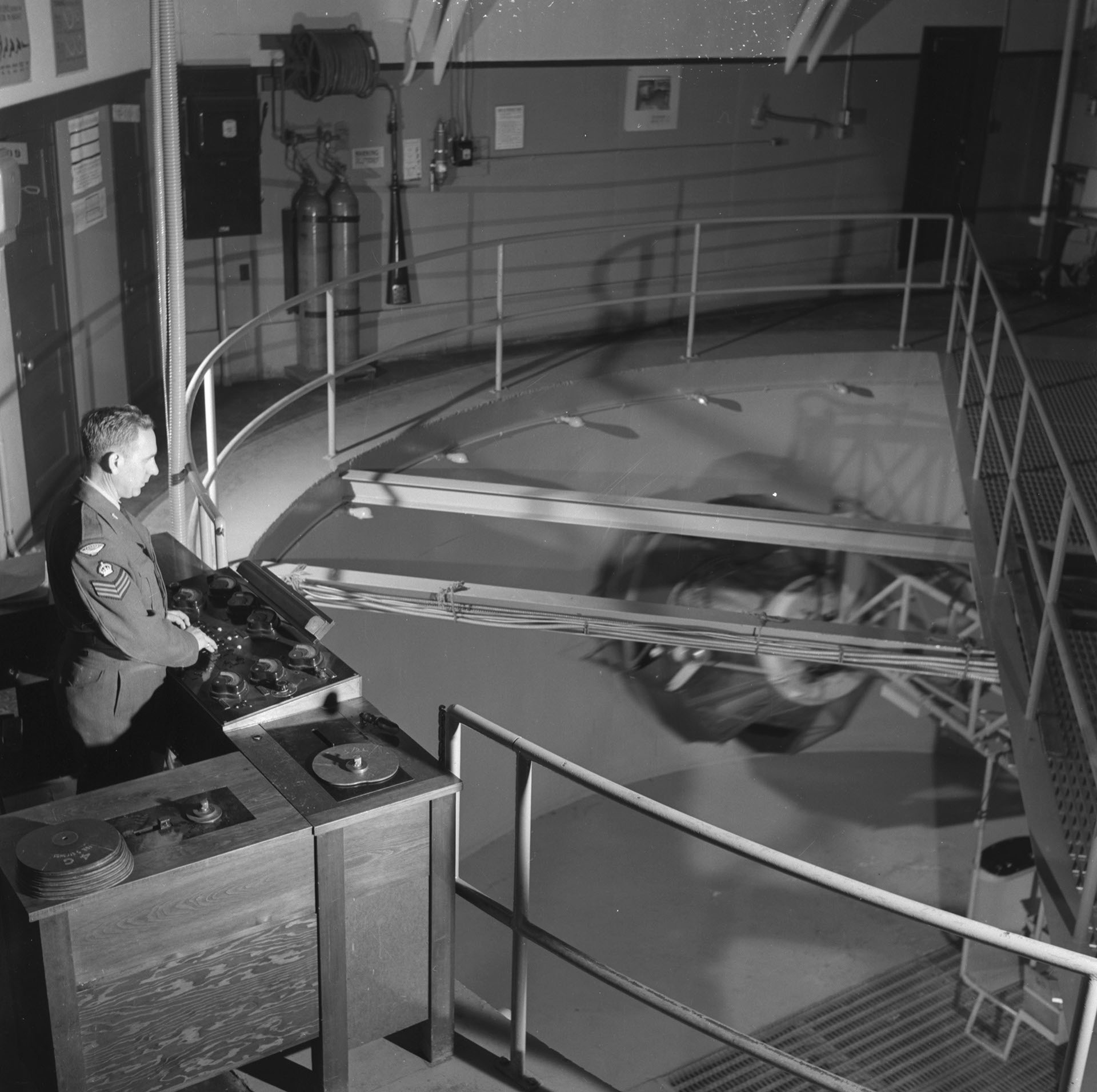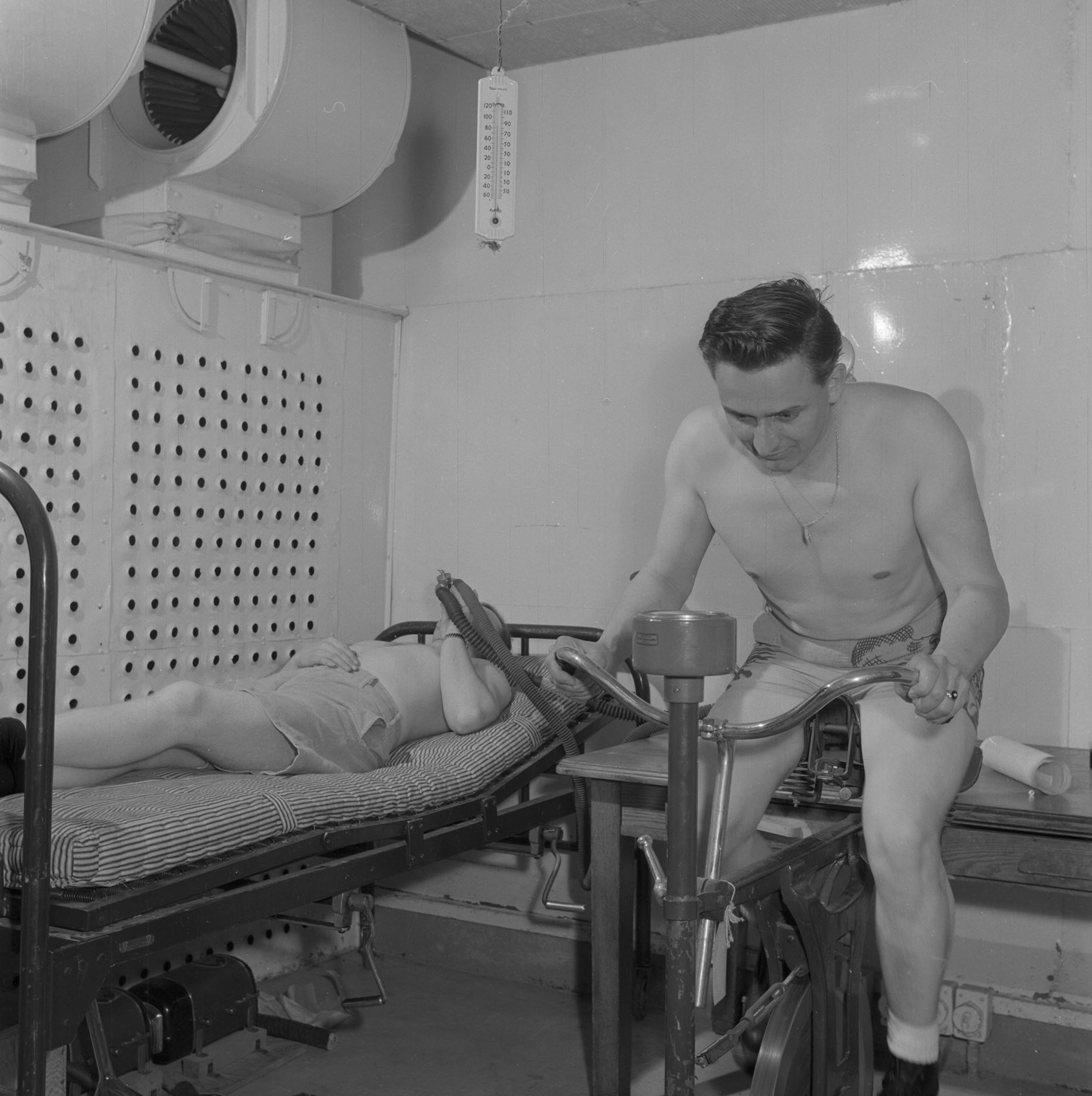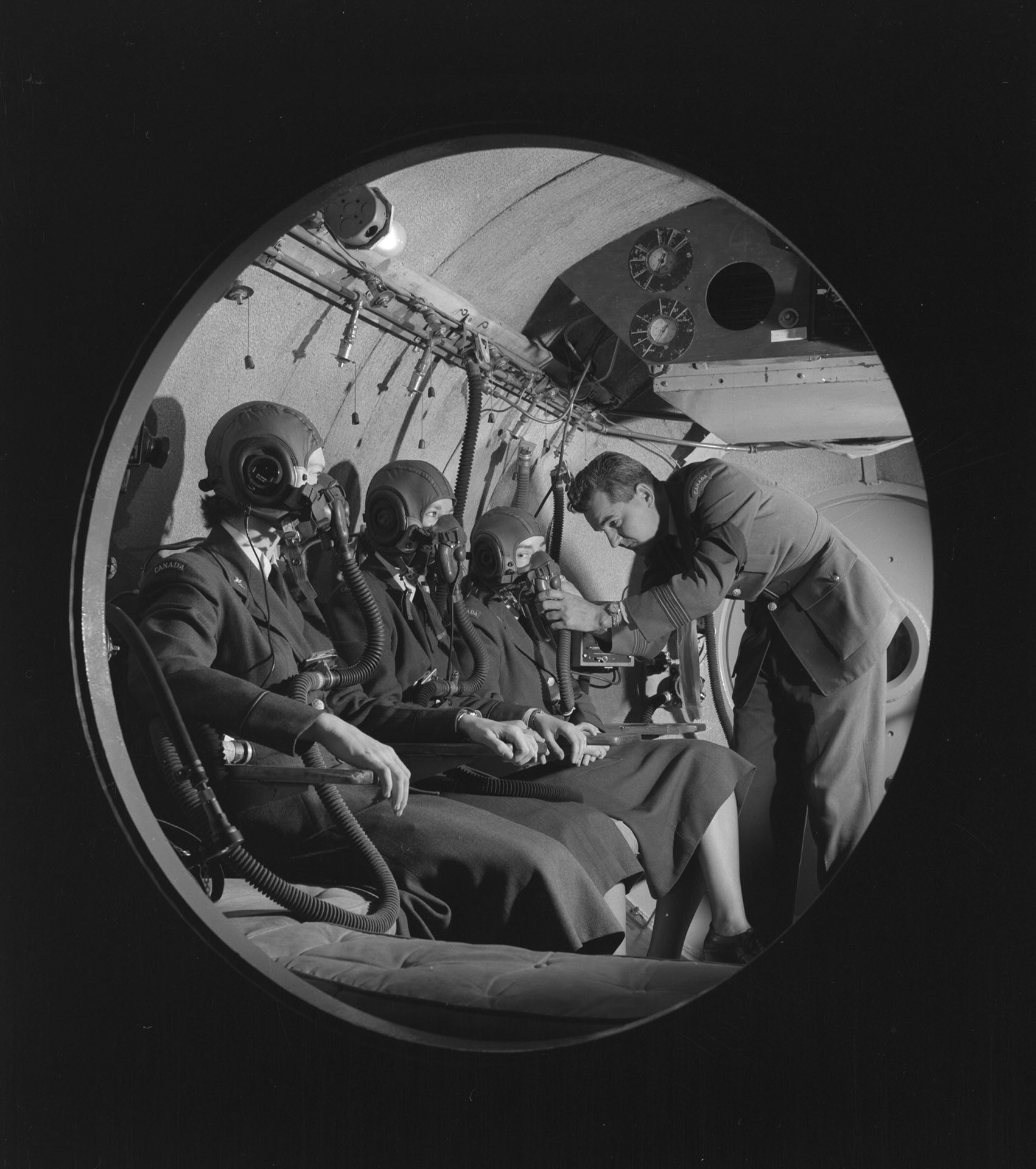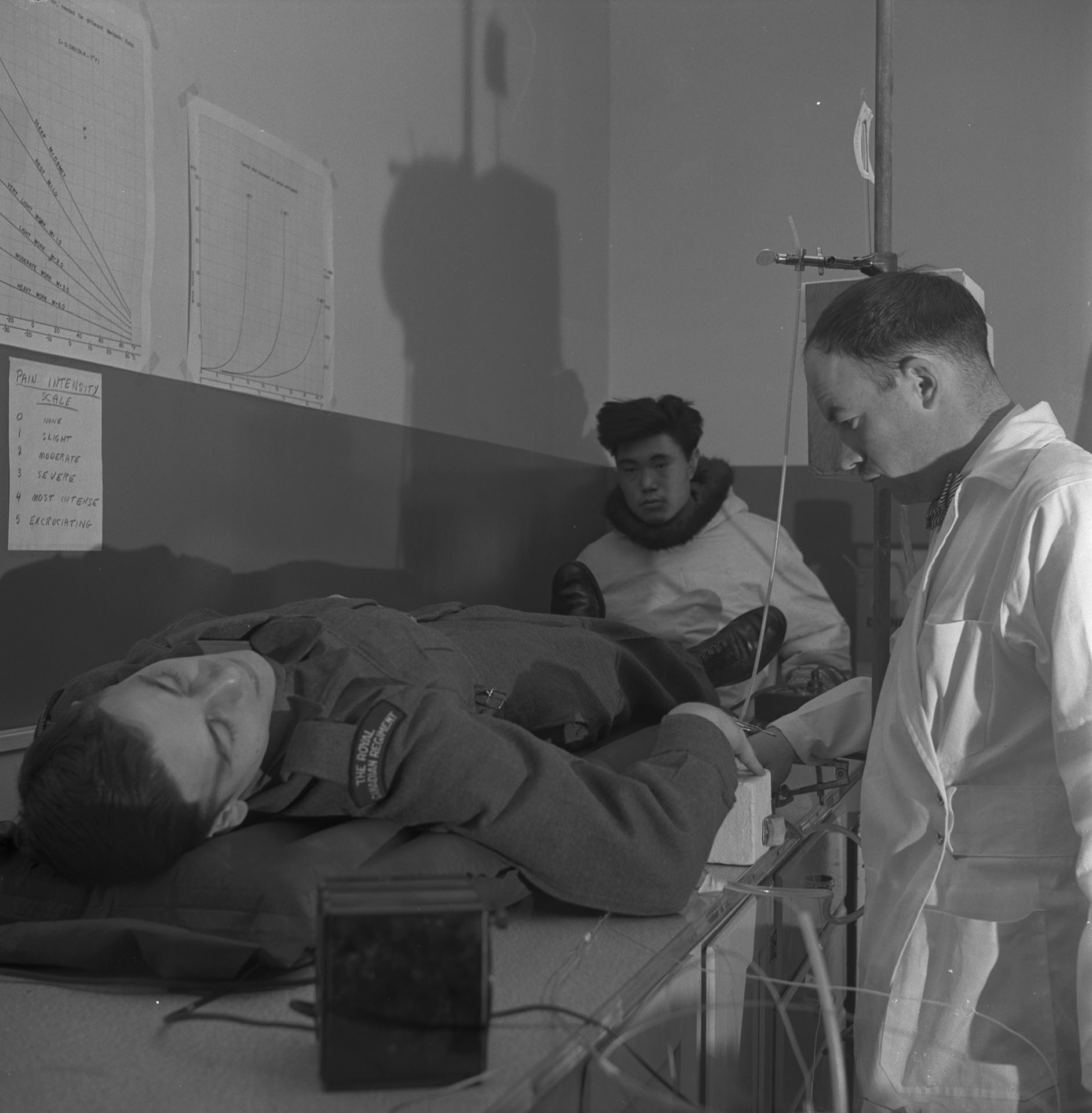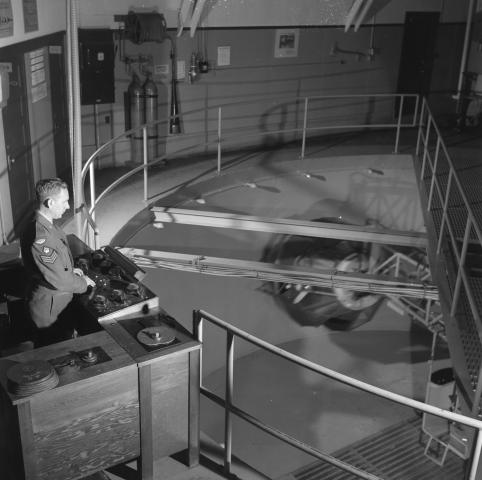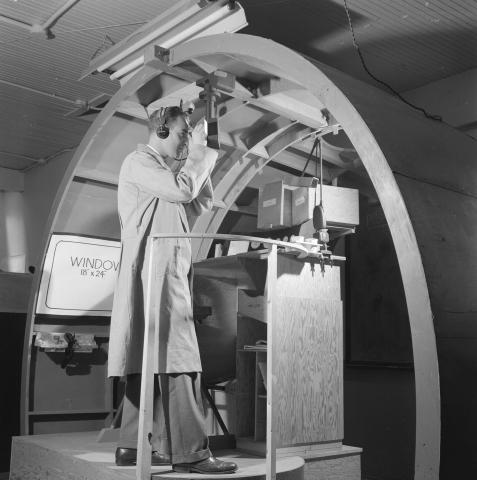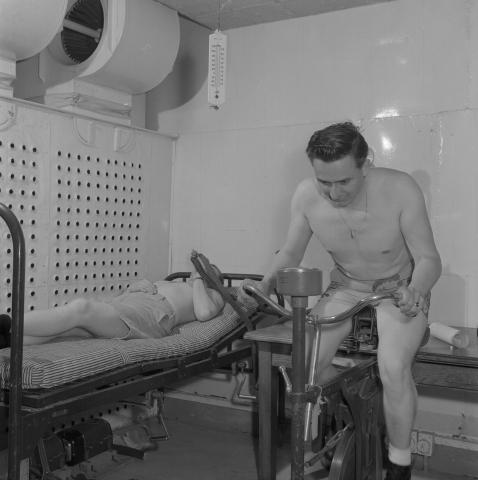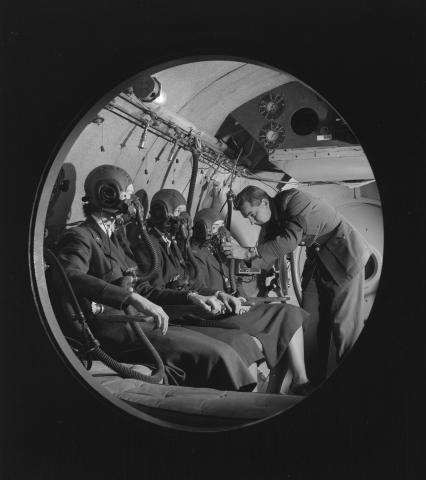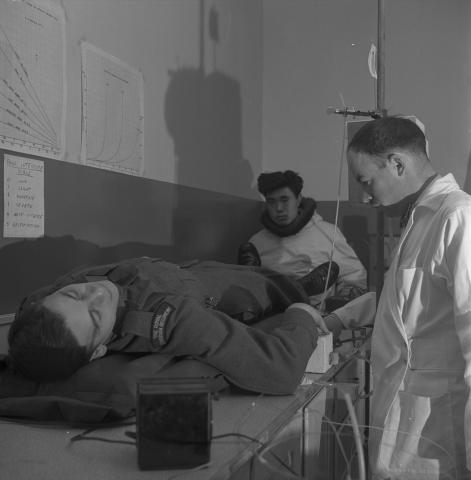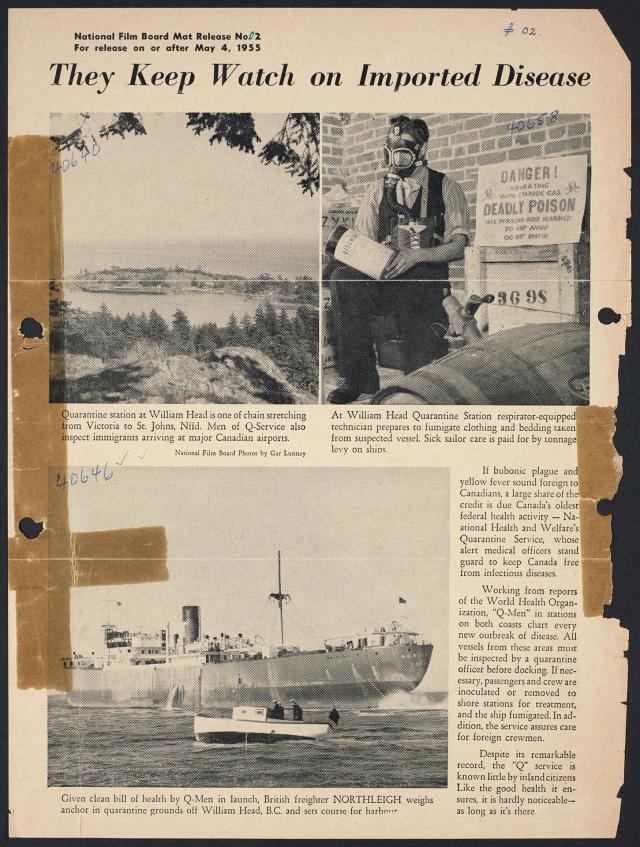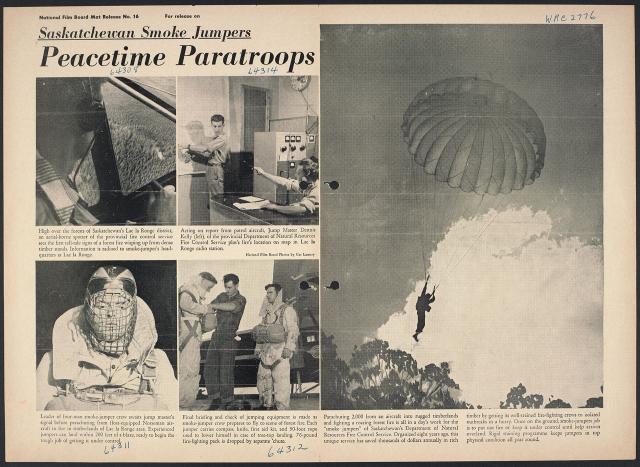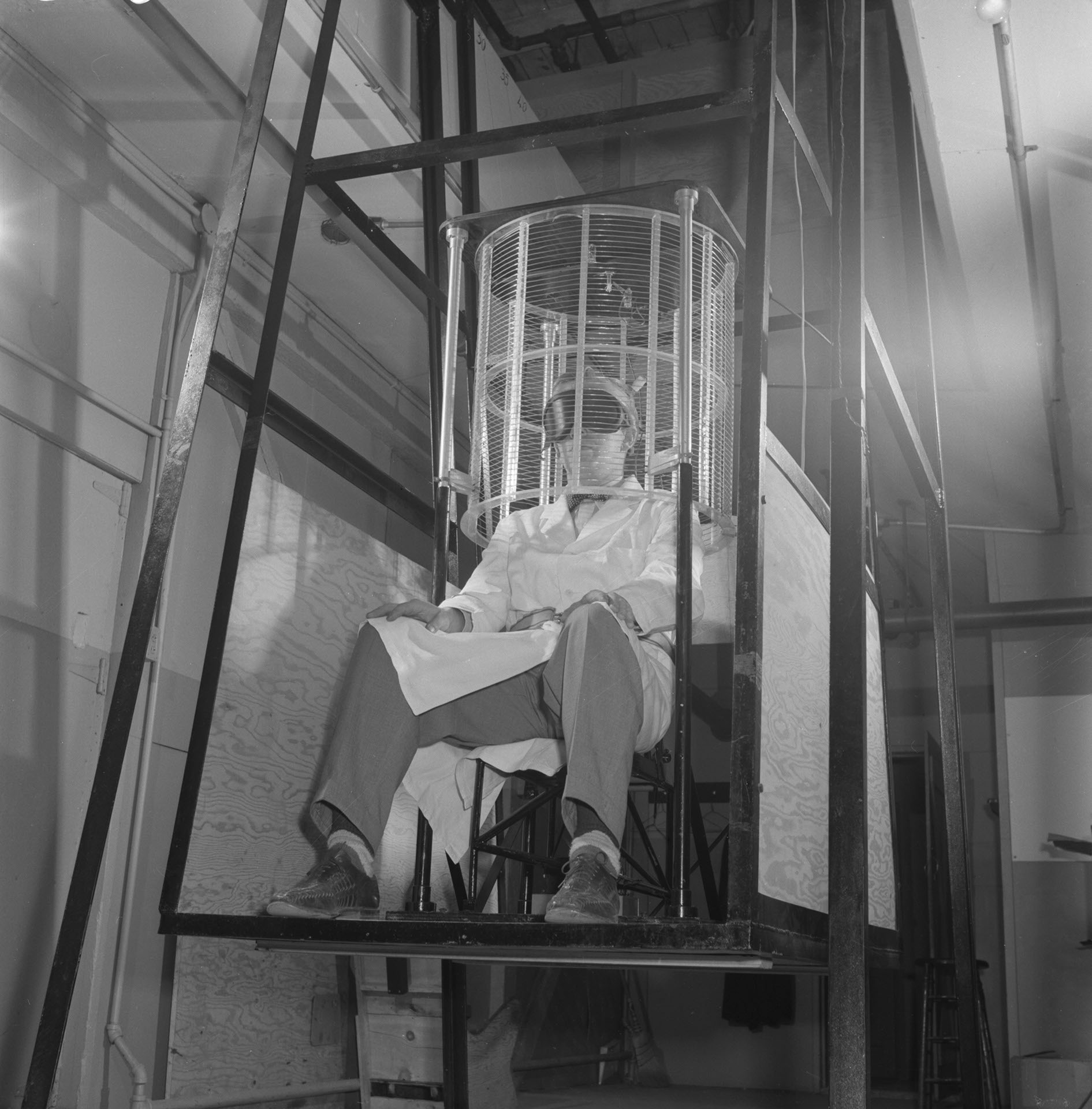
Photostory #1: Canada's Scientists Get Behind the Servicemen
Photographers
,
Maker
National Film Board of Canada
Release Date
March 24, 1955
Collection
CMCP fonds
Credit Line
Canadian Museum of Contemporary Photography fonds, National Gallery of Canada Library and Archives
Main Text
What happens to the brain cells of a jet-fighter pilot who is subjected to "G" during steep turns and pullouts? What causes sea and air sickness? What should an infantryman eat and wear in below-zero Arctic temperatures? In laboratories across Canada, in the frozen wastes of the North, and in the scorching heat of simulated tropics, scientists and doctors of the Defence Research Board are probing for answers to these, and other, related questions. They are finding out exactly what the body can take, and then how they can bolster it to withstand the stress and strains imposed on its resources. Their primary concern: to keep the well man well and at top operating efficiency. Working on a tri-service scale with a bewildering array of apparatus and instruments, D.R.B. research teams are carrying out tests dealing with foods, clothing, sonics, and human resources. They study the reaction of bodily machinery to high-altitude pressure changes, determine the mental and muscular co-ordination levels of flyers at supersonic speeds. And with equipment of their own design, they can chart the sensitivity of a Naval recruit to motion sickness, or measure a jet-pilot's tolerance to the "G" imposed by high-speed aerobatics. Their findings have developed tastier and more nourishing rations for troops, new techniques and drugs for treatment of burns, wounds and frostbite, lighter and warmer clothing for Arctic living and fighting. In the final analysis, it is this concern with human factors that will make the serviceman much more able to meet the increased demands of his job, whether at the rarefied jet-plane height of 40,000 feet, or in the humid stickiness of a 102∞ tropical jungle.
Subjects:

